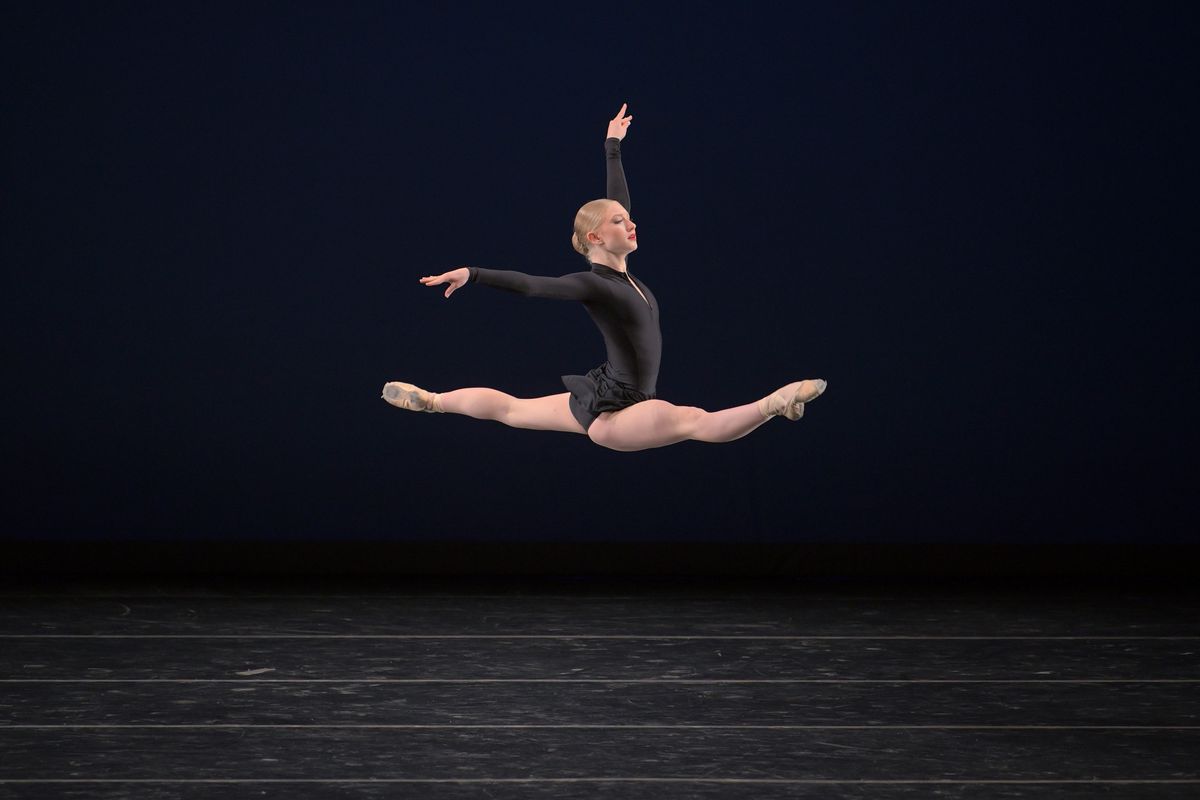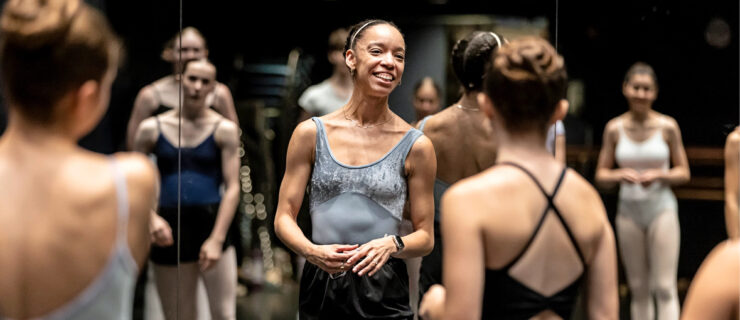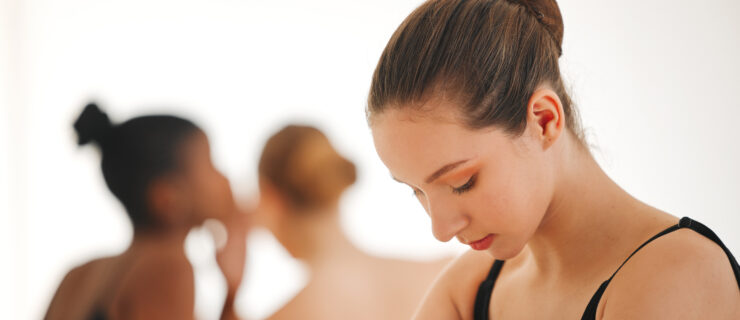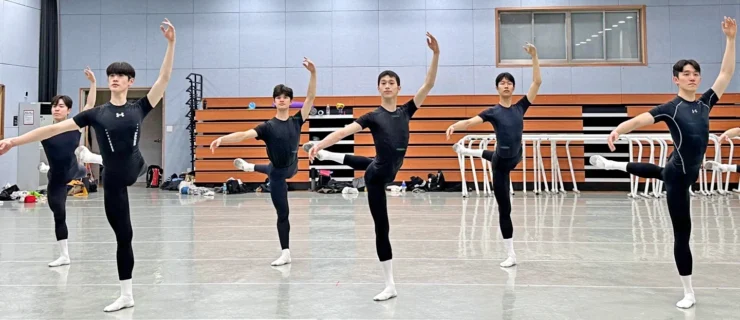How to Bring More Artistic Intention to Your Contemporary Solo at Ballet Competitions
As someone who has judged many ballet competitions, I’ve had the opportunity to see some breathtaking contemporary solos that combine fantastic technique with well-conceived choreography. Yet it’s often hard for us judges to see the artistic intention behind these solos the way we can when watching a classical variation. For one thing, we’re simply more familiar with classical ballet’s repertoire and characters. But also, when a contemporary solo is just a string of one trick after another, or only delivers one emotion (such as overwrought angst), we don’t get to see any artistic depth.
Physical and technical virtuosity, such as beautifully held extensions or well-executed multiple pirouettes, are central to classical ballet. Displaying this virtuosity in a contemporary solo is important, but it shouldn’t be your final goal. The emotional aspect of the solo is also critical, and should have dimension as opposed to a series of anguished facial expressions. You should be a character onstage—and not a caricature.
So, how do you create a contemporary performance that will catch the judges’ attention and help you grow as an artist? Let’s explore some strategies.

Find a Good Choreographer
Start by finding a choreographer whom you work with well. This can be a very personal journey, as the relationship between dancer and choreographer has a huge effect on the rehearsal process and the final product. It’s best either to approach someone you’ve worked with in the past, such as a contemporary teacher, or to get a recommendation and introduction from a trusted instructor.
As for the choreographer? “The person you’re working with has to understand that they need to provide a safety net first,” says Stephanie Saland, a former New York City Ballet principal dancer who has judged for Youth America Grand Prix. That way, she says, you’re freer to “explore the choreography, disassemble it, find out what other nooks and crannies are there.” Feeling safe enough to try new movement and take risks is important to the process and allows you to discover the joy that comes from the creative journey.
Choreographer Viktor Plotnikov, who has created competition solos for dancers such as Sarah Lamb and Jeffrey Cirio, makes an effort to get to know the dancers he works with beforehand. “If I have the chance to see the student live in class or rehearsal, it’s great to talk to them and see the energy they radiate,” says Plotnikov. This helps him to create a rehearsal space tailored to each dancer’s personality, which encourages them to lower their guard and engage more deeply with the material.
 Madison Brown performs her contemporary solo at Youth America Grand Prix. VAM Productions, Courtesy YAGP
Madison Brown performs her contemporary solo at Youth America Grand Prix. VAM Productions, Courtesy YAGPUse Rehearsal to Grow and Explore
Your choreographer will ideally create a competition solo that both plays to your strengths and pushes you outside your comfort zone. For example, when Plotnikov is working with a more lyrical student, he says, “I will combine both fast and slow-paced movement, in order not to deprive dancers of their natural ability, but also to emphasize their development as artists.”
As for the dancer, use your studio time wisely. “The biggest challenge for most students is a lack of proactivity during the choreographic and rehearsal period,” says Plotnikov. He urges dancers to keep moving, following the choreographer’s lead. “The faster they learn, the more time can be spent developing the dance’s artistic elements.”
 Grace Koznarek at American Dance Competition. Smack Arts, Courtesy ADC | IBC
Grace Koznarek at American Dance Competition. Smack Arts, Courtesy ADC | IBCCreate a Character
As you perfect your solo’s technical elements, don’t neglect to do the emotional work, as well. Concentrate on how the dance makes you feel and use those emotions to shape your performance.
All art is storytelling, even if your solo is abstract. We use our technique to create characters and stories within our dances, and this is what elevates our performances beyond mere technical displays. To use a classical example, when Odile performs her fouettés in Swan Lake, we’re impressed by her pyrotechnics. But the ballerina is also using this to further her character, to celebrate her victory over Siegfried and to set up the tragedy which makes the whole ballet so poignant and meaningful. This is the alchemy that makes for powerful performances and turns the merely physical into the spiritual and artistic.
You can apply this logic to an abstract piece by making time to explore your choreography more deeply. “Play with the human body and find a way to amplify the solo’s idiosyncrasies and give them texture,” says Saland. “That might be the best rabbit hole you ever fell down—you may find a character you didn’t know you had in you.”
Another way to find your character within a contemporary piece, especially if it’s abstract, is to immerse yourself in the music. When I’m creating a new ballet, I put the music on repeat, and then do the laundry or cook dinner or something else that’s not dance-related. This way, the music seeps into my unconscious, and ideas, images and characters start to emerge. Taking time to let your brain work out a backstory while you’re outside the studio can help that character have so much more depth.
Each time you work through the piece, be aware of what you’re trying to say—this could be concrete (“When I make this particular port de bras, I want you to imagine I’m a cat”) or abstract (“This movement is meant to invoke the Greek concept of the phlegmatic”). Those watching could read a completely unintended meaning into it, and that’s okay. But always strive to use your moments onstage to communicate with your audience, beyond simply “wowing” them.





